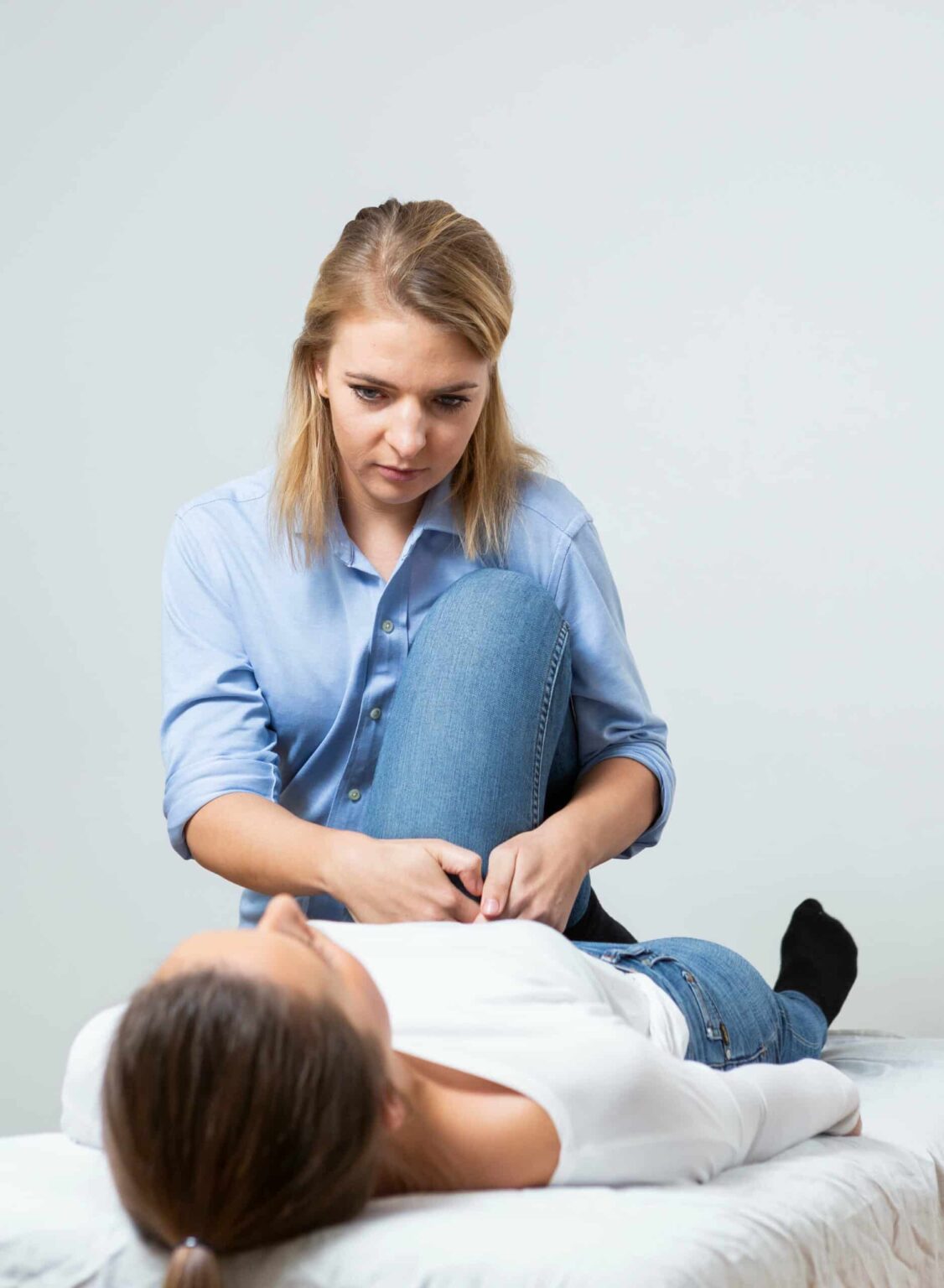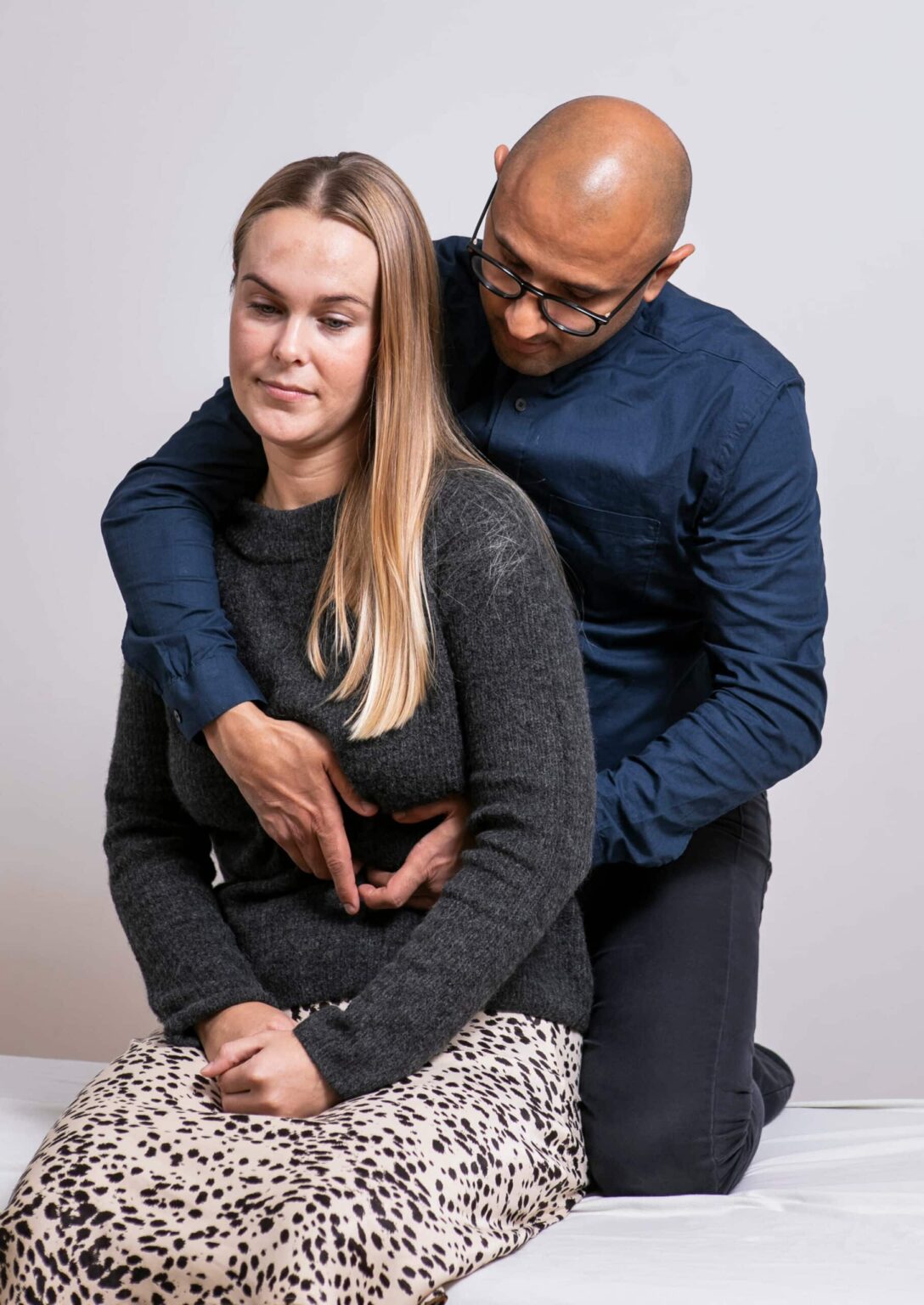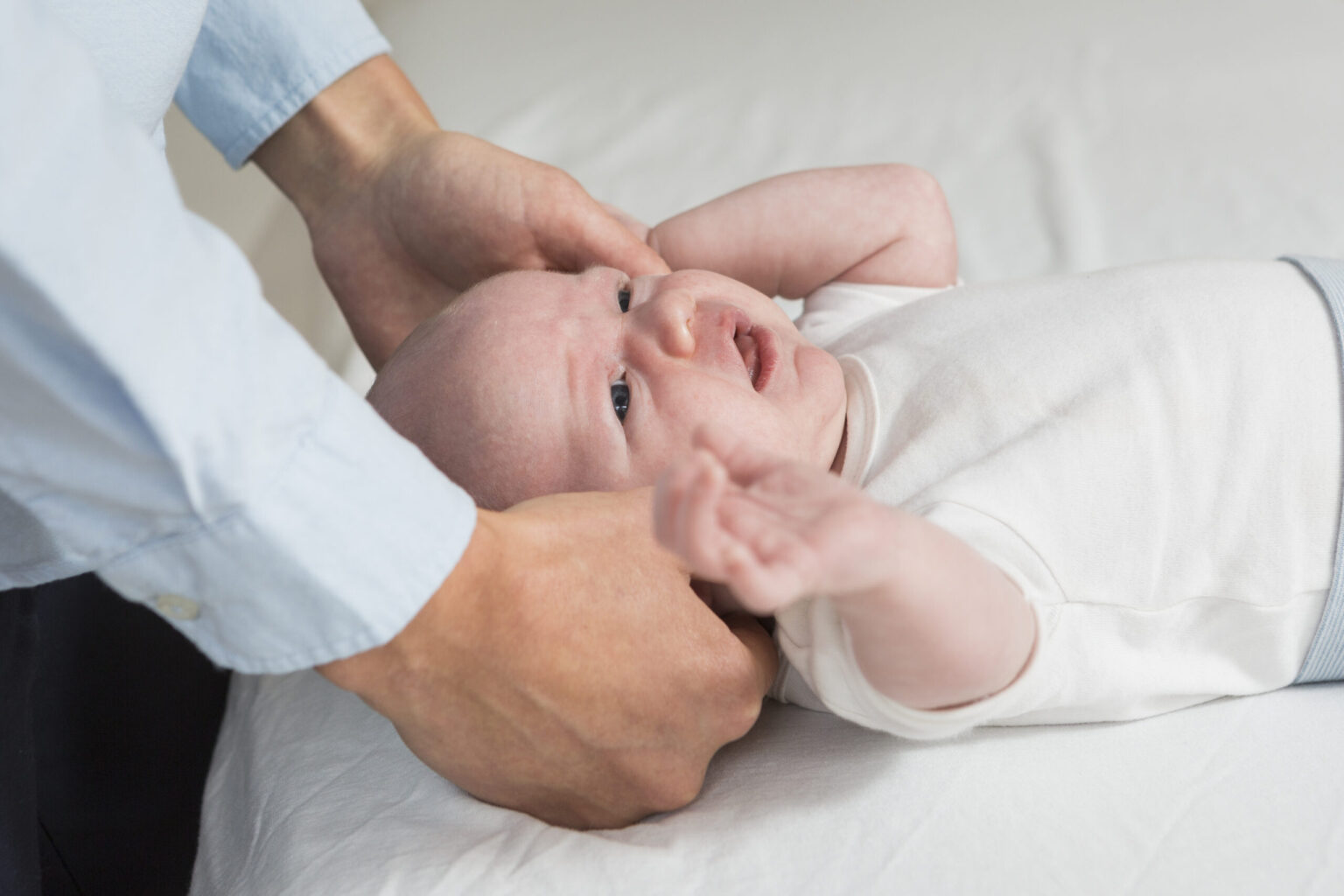We help with problems related to
Hysterectomy
Learn more about hysterectomy (removal of the uterus) here
Everything you need to know about a hysterectomy
This operation is most often performed for benign disease (benign hysterectomy) and more rarely for cancer treatment. Approximately 2500 benign hysterectomies are performed annually (DHHD 2022/23). The number has decreased significantly since 2003, when just under 5000 were performed (DHD 2003).
Hysterectomies related to cancer are approximately 1000 (DGCD) per year. The uterus is removed for cancer of the ovaries (ovarian cancer), the uterine cavity (corpus cancer) and the cervix (cervix cancer).
Jump to section [Vis]
Benign reasons for removing the uterus
Fibroids: Fibroids are common in women, and in the period from 40-50 years they can be found in 50%. If the fibroids are not very large, they do not have to cause symptoms and after menopause they usually shrink (due to less production of estrogen) and do not become any further problem. However, they can be so large that they cause pressure symptoms and pain from the surroundings, for example in the intestine (difficulty with defecation) and in the bladder (frequent urination). They can also affect the function of the uterine cavity and thus disrupt menstruation with the result that you bleed heavily and perhaps irregularly.
Heavy bleeding: The uterus can also be of normal size and still cause problems such as heavy bleeding with or without pain. If less invasive methods such as hormonal regulation, hormonal IUDs or removal of the lining of the uterine cavity cannot solve the problem, a hysterectomy may be necessary to solve the problem.
Endometriosis: A painful condition, especially during menstruation. In this disease, mucous membrane is found elsewhere in the pelvis that resembles and behaves like the mucous membrane that is inside the uterine cavity. Endometriosis can be located inside the wall of the uterus (adenomyosis), ovaries, at the bladder, between the vagina and rectum and otherwise scattered on the peritoneum in the pelvis. In rare cases, it is found far from the uterus (e.g. in the lungs). Endometriosis then bleeds in the wrong places during menstruation and causes irritation, adhesions and pain. It can be treated medically with birth control pills, which are taken without a break to suppress menstruation. You can also use a hormonal coil, which has a similar effect on the tissue close to the uterine cavity. The solution can also be surgical removal of as much of this tissue as possible. If there is no desire to preserve fertility, it may be appropriate to remove the uterus.
Uterine prolapse and prolapse: In some patients, the uterus may prolapse, most often after women have given birth vaginally several times. Today, it is relatively rare to solve the problem with a hysterectomy. Today, the problem is most often solved with minor surgeries (vaginoplasty).
Sources:
– Sundhed.dk
– Gynækologi, Wilken-Jensen, Munksgaard, 4 udgave
– Dansk Hysterektomi og Hysteroskopi database 2022/23 (DHHD 2022/23

Surgical technique (benign hysterectomies)
In open hysterectomy, a bikini incision is usually used, in the same way as a cesarean section. In rare cases, if a very enlarged uterus is to be removed, the incision may have to be made lengthwise. When making a bikini incision, 7 layers of the abdominal wall are passed through. However, it is important to know that the muscles are not cut, but simply pushed out to each side. When the wound has healed, the abdominal wall can become as strong as before the operation.
Man kan gå hjem dagen efter operationen og bør sygemeldes i 3-4 uger. Man kan være aktiv med det samme, men skal dog undgå løft over 10 kg de første to uger, herefter kan man træne med normal intensitet. Anbefalinger kan dog variere fra afdeling til afdeling.
In the minimally invasive methods, the uterus is detached with instruments with a diameter of 5-10 mm, which are either inserted through the abdominal wall (laparoscopically) or through the vagina. The scope and instruments are inserted through some airtight seals, as the abdominal cavity, to provide an overview, is inflated with CO2. The structures to be divided are “welded” with electricity and subsequently cut with a knife or a type of ultrasonic knife. Finally, the vagina is opened right at the transition between the vagina and the cervix. The uterus is then pulled out through the vagina. The top of the vagina is closed either from above or from below with sutures that dissolve themselves after about a month. When sewing together, the ligaments that have helped to hold the uterus and vagina in place are included. With this method, you can go home on the day of surgery or the day after at the latest, and only need a sick leave of 2 weeks. For all types of surgery, you should wait 6 weeks before having intercourse to avoid a hole in the top of the vagina (rupture of the vaginal top). Most people can manage with paracetamol and ibuprofen after discharge.
You should try to be as active as possible the day after the surgery, but again avoid lifting more than 10 kg for the first two weeks. After that, you can resume training at normal strength.
What is removed during a hysterectomy?
Basically, the entire uterus, including the cervix, is removed. It was previously more common to leave the cervix, partly because the operation was technically a little easier and partly because it was believed that it was gentler for subsequent sexual intercourse and orgasmic function. However, this has been disproven in several studies, and it has therefore been decided to abandon the method, as there are several advantages to it. The risk of cervical cancer is eliminated. Up to 10% of patients with a cervix left in place experience bleeding from it. If the cervix has been removed, simpler hormone therapy (only estrogen) can be used if needed, which reduces the risk of breast cancer. The fallopian tube is also removed, as it no longer has any function, and because it appears to reduce the risk of developing ovarian cancer by 45%.
In women under 64 years of age, the ovaries are left in place, here studies have shown that even though menopause has occurred much earlier, there appears to be little benefit from the residual production of hormones in the ovary. If there is ovarian cancer in the family or a tendency to cyst formation on the ovaries, they can be removed at an earlier age, after consultation with the patient.
Sources:
Patientinformation, Rigshospitalet
Dansk Hysterektomi og Hysteroskopi database 2022/23 (DHHD 2022/23)
Dansk Hysterektomi Database 2003 (DHD)

Complications of hysterectomy
Serious complications occur in few of the operations. Patients with endometriosis where there are pronounced adhesions are at greater risk.
Serious complications include: bleeding over 1000 ml, re-operation due to bleeding, damage to the ureter, bladder and very rarely the intestine. Although it helps to prolong the recovery period, it rarely causes permanent damage.
In the long term, some patients develop problems with vaginal apex prolapse – if it is pronounced and bothersome, it may require a repeat operation.
Other consequences of hysterectomy
Some patients experience weight gain after the surgery. This is probably because the surgery is often performed on women close to menopause. The surgery itself can accelerate (hormonal) menopause by one and a half to one year. It is well known that some women gain weight during menopause, and that it can be accompanied by mood swings and sweating.
The drop in hormones is undoubtedly a contributing factor to some of the symptoms that occur, but lifestyle changes in the form of less exercise and poor diet can also contribute. If the ovaries are removed during surgery, there is a sudden drop in hormones and this will exacerbate the symptoms for a period of time.

Alternatives to Hysterectomy
Removal of fibroids (myomectomy)
If the problem is caused by fibroids, you can simply remove them, leaving the uterus. If there are several and of a certain size, the operation is performed through a small bikini incision. Individual fibroids can be removed with laparoscopic surgery. The operation can reduce bleeding, pain, and the feeling of heaviness. However, myomectomy does not provide the same guarantee of freedom from symptoms as hysterectomy, as both bleeding problems and fibroids (fibroids) can return. The operation has fewer serious complications than hysterectomy (DHHD 2022/23).
Hormonal IUD
In case of heavy bleeding from a uterus of normal size without fibroids, a hormonal coil can be an effective treatment. It releases a hormone of the progestogen type locally, which after some time causes the lining to shrink and thus less or no bleeding. The hormonal coil is also used, as previously stated, in the treatment of endometriosis.
Removal of the lining of the uterus (endometrial resection)
Here, a scope is inserted through the cervix and the mucous membrane is cut into shavings using an electric sling. The aim is to cut so deeply that the glands that normally grow and are shed during a menstrual cycle are completely removed. In patients under 45 years of age, it can be difficult to get everything in because estrogen production is still going well. To ensure a good result, the operation can be supplemented with a hormonal IUD.
How can osteopathy relieve symptoms after hysterectomy?
Osteopathy may be an option if you are in pain after your hysterectomy. However, you should see your doctor first to rule out other causes. The pain may manifest itself in the form of neck, lower back or pelvic pain, tenderness around the scar tissue, and problems with the gastrointestinal system such as constipation and bloating. After a hysterectomy, scar tissue can form, regardless of the type of surgery.
Scar tissue can reduce mobility around the pelvic organs and thereby cause you discomfort – here, osteopathy can use manual techniques to loosen and increase mobility, the glide between the tissues and blood flow to the area.
In addition, osteopaths can advise on diet, exercise and other lifestyle changes that can help reduce pain and improve tissue healing.
As previously stated, there may be several reasons why you ended up having your uterus removed. If it is due to pain, you may have unconsciously developed a bad posture to protect the area. This tendency to bad posture does not disappear in everyone after the operation. Here, osteopathy can help open up the chest region and thereby provide a more open posture, which makes you breathe more optimally and increase circulation. This can make digestion work better and make you feel better. With osteopathy, we can help to calm and balance the nervous system and thus help with healing, as stress reduces the body’s ability to heal.

Good advice after the procedure
After the procedure, it is important that you:
- Eat a healthy and varied diet to promote healing.
- Get enough fluids (1.5 L).
- Avoid smoking and alcohol as much as possible, as it slows down healing.
- Hospitals recommend that you take laxatives to keep your digestion going.
- Keep yourself active, but to the point of pain. You are allowed to go for walks and light cycling. For the first 2 weeks, you are not allowed to do hard sports or lift heavy objects (more than 10 kg) due to the healing of the internal and external wounds (patient information, Rigshospitalet).
- Wait to take a bath or swim as long as you are bleeding, but at least for the first 14 days.
You may experience shoulder pain after the procedure. This is not due to an injury to the shoulder, but the nerves in the diaphragm have been irritated by the CO2 left behind, which was used during the operation. The pain will go away again, it takes between a few hours and 2 days. The more you are up and moving, the faster the discomfort will disappear (patient information, Rigshospitalet).
Sources: Patientinformation, Rigshospitalet

Often related pain

Ovarian surgery

Hysterectomy

Endometriosis

Pelvic pain

Menstrual pain

PMS

Involuntary infertility

